721 W. Abram Street
Arlington, TX 76013
800-489-0727
817-277-0727
817-277-2270 (fax)
E-mail: info@FHautism.com
www.FHautism.com
All rights reserved.
No parts of this book may be reproduced in any manner whatsoever without written permission of Future Horizons, Inc. except in the case of brief quotations embodied in reviews.
Cataloging in Publications Data is available from the Library of Congress.
TABLE OF CONTENTS
 Chapter 1
Chapter 1
Who Are Resistant Eaters?
 Chapter 2
Chapter 2
Oral-Motor Development
 Chapter 3
Chapter 3
Environmental and Behavioral Factors
Contributing to Problems with Eating
 Chapter 4
Chapter 4
Sensory-Based and Motor-Based Problems
Affecting the Resistant Eater
 Chapter 5
Chapter 5
Motor-Based Eating Problems vs.
Sensory-Based Eating Problems
 Chapter 6
Chapter 6
Designing and Implementing a
Comprehensive Treatment Plan
 Chapter 7
Chapter 7
Part 1: Environmental Controls
 Chapter 8
Chapter 8
Part 2: Gastrointestinal, Physical and Oral-Motor Development
 Chapter 9
Chapter 9
Part 3: Stages of Sensory Development for Eating
 Chapter 10
Chapter 10
A Recipe for Success
FOREWORD
by Temple Grandin
Dr. Lori Ernsperger and pediatric occupational therapist, Tania Stegen-Hanson, take one of the most challenging problems in the family, that of a resistant eater and/or a child with food aversions, and offer a refreshing approach to expanding the childs repertoire of foods and create a balanced diet.
Their underlying theme is to understand the physiological, developmental, sensory and motor skills of the child and, most importantly, to respect the childs communication and response to eating. The authors attack many of the myths that surround eating, beginning with the idea that eating is a simple process. In fact, they contend and offer substantial proof that its an incredibly complex process. They also dispel the cultural myths which surround food, one example being that parents are not doing their job well if their child doesnt eat properly or clean his plate. Another is that problem eaters are just being difficult, as if theyre in a power struggle, when they often have underlying oral-motor delay or sensory integration dysfunction, allergies, or any number of other possible problems not yet identified. Some of the myths are actually life threatening, such as If children are hungry enough, they will eat. Not so of some problem eaters, say the authors. The eating myths function as roadblocks to solving many problem eaters selectivity and expanding their exposure to new foods.
The authors advocate a team approach to diagnosis, not only because of the technical components in problem eating, but also because if the child is in school or activities, it will take a team approach and time to expand the problem eaters diet. They enumerate a detailed list of various characteristics that act as indicators of the basic problems, to help the reader in making careful observations and assessment. They also provide exercises for the parents and professionals to examine their beliefs and eating experiences so the child may begin a healing process.
Once the problem that is often the bane of many families existence is identified, the authors explain how to design and implement a comprehensive treatment plan. The treatment plan offers refreshing relief from past behaviors because the authors address specific recommendations, and their approach is to focus on the child and to have fun with food and not just focus on eating or putting food in the mouth. They advocate introducing one new food item to the problem eater with each meal while always having at least one of the preferred food items present. The authors discuss setting up the correct environment, providing support for physical and oral-motor needs, and creating a myriad of games for playing, touching, smelling and even painting with food, among other activities, to encourage enjoyment of the physical components of eating (the mouth) and eating itself.
This talented team has a blockbuster book, literally and figuratively, as they offer a positive program to help those who are struggling at least three times a day with the serious problem of food aversion and food selectivity.
ACKNOWLEDGEMENT
by Lori Ernsperger
I must first acknowledge all of the children and parents who have shared their eating experiences with me. I hope this book can assist you in your journey of learning and loving new foods.
This book was improved immeasurably by the thorough editing and skill of Kirsten McBride. Kirsten was able to take the ramblings of two authors and create an outstanding manuscript with a singular voice and purpose. I also appreciate the many hours of hard work put forth by Victoria Ulmer and Wayne Gilpin at Future Horizons. The entire staff at Future Horizons have encouraged and supported this project in various ways. I would also like to thank Dr. Kay Toomey who first taught me about the eating challenges faced by children with developmental disabilities.
Finally, I would like to thank my husband, Tom Ernsperger, for his endless support and love of eating. This book is dedicated to our children, Ben and Jessica, who provide the basis for my wonderful and challenging experiences in parenting. My husband and children endured many meals which included experimenting with new and exotic foods.
I thank you all.
ACKNOWLEDGEMENT
by Tania Stegen-Hanson
God has blessed me with the following very important people who have enriched my life and made my contribution to this book possible:
Dave, my husband. I thank him for his support and understanding when a lot of time was spent in front of the computer or meeting with Lori. I am grateful that he is my partner and my friend, and words cannot begin to express how much he means to me.


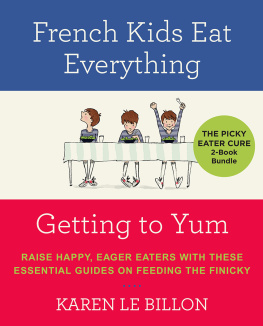
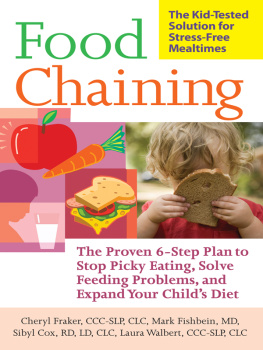
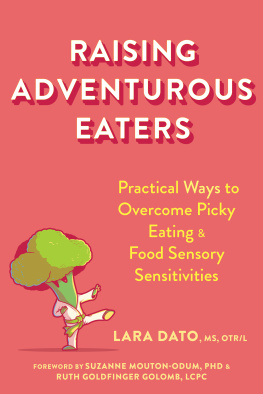
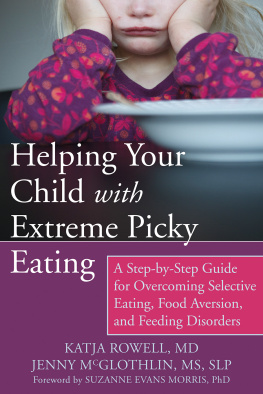

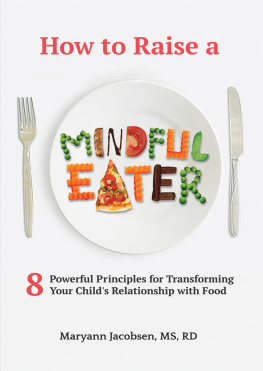
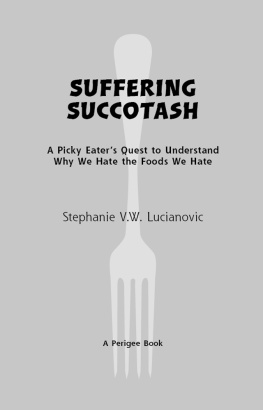

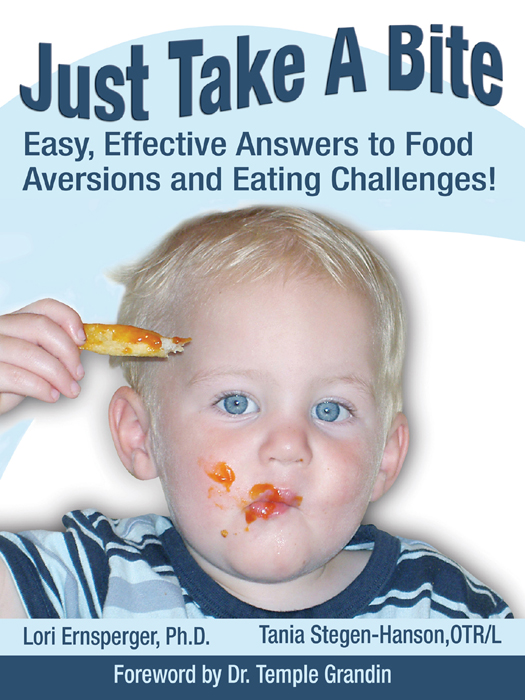

 Chapter 1
Chapter 1